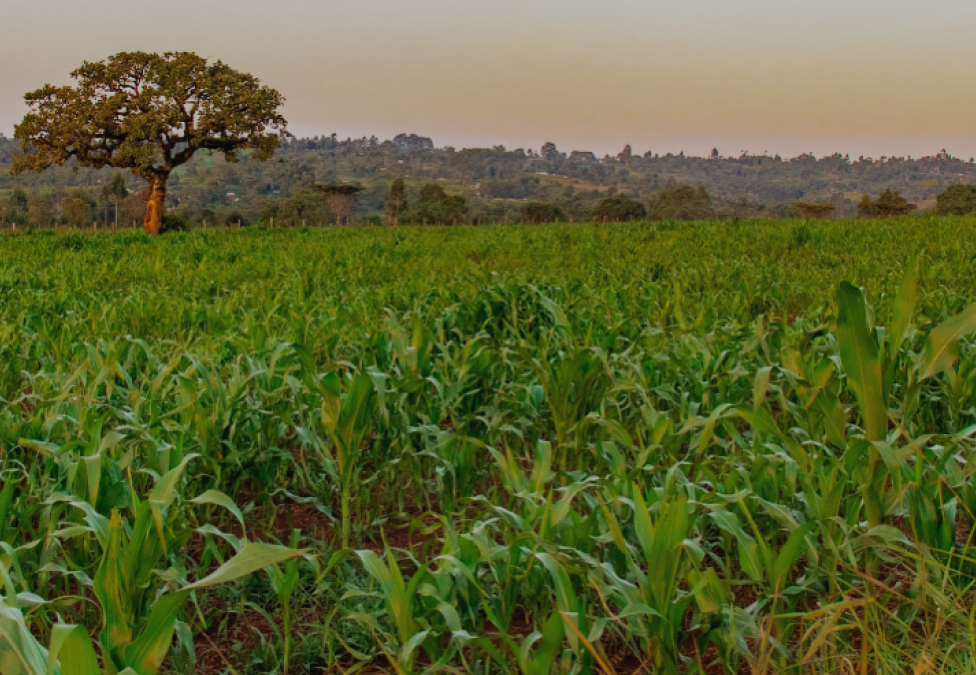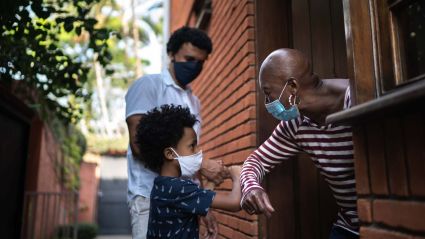
In Kenya, COVID-19 restrictions cut off access to agricultural inputs and sowed confusion among farmers. The impacts on food security—and farming livelihoods—could be severe and long-lasting.
The confirmation of the first COVID-19 case in Kenya on March 12, 2020, set off a series of events that put the livelihoods of smallholder farmers at risk and also increased food insecurity throughout the country.
Kenya’s smallholder farmers account for more than 70 percent of the country’s agricultural production, and this output meets about 75 percent of domestic food needs in Kenya, according to the Ministry of Agriculture. What has happened this year, says Dr. Jemimah Njuki, the Africa Director for International Food Policy Research Institute (IFPRI), is that the pandemic has disrupted both the production stage and the consumption markets of the Kenyan food system.
During the production stage, COVID-19 restrictions cut off access to agricultural inputs and sowed confusion among farmers
One of the first ways the pandemic affected smallholders was that restrictions on movement obstructed access to important farming inputs, including seeds.
Evans Mbugua, a smallholder vegetable and maize farmer in Nyeri County, says, “The beginning of this pandemic coincided with the beginning of the long rains and the planting season in April. We were cut off from urban areas from where we access seeds and fertilizer.” He adds, “Half of the seeds that I planted were recycled and the rest were bought from private dealers.”
Resorting to buying uncertified seeds is a drastic step for Kenyan farmers. The Ministry of Agriculture encourages farmers to purchase seeds from its agencies as they cannot guarantee that seeds bought from private dealers are genuine. Uncertified seeds are often low yielding and can result in poor quality crops.
Next, a lack of agricultural extension and advisory services—which typically offer technical advice on crop varieties, water management, pest control, and other aspects of farming—left farmers without clear guidance about how to respond to a number of simultaneous challenges, including erratic weather patterns, a devastating locust invasion, and the pandemic itself. While the lack of extension services was an issue in Kenya prior to COVID-19—according to U.N. statistics, the extension officer to farm household ratio is 1:1,093 as compared to the FAO recommended 1:400—the pandemic has exacerbated the problem.
Evans Mbugua says, “The government extension service does not exist. We have a few private agricultural officers. Their consultation fees vary from individual to individual from Ksh557 to Ksh1,671 (roughly between US$5 and US$15). This is an additional cost that we cannot afford on top of high seed and fertilizer prices, high labor wages, and losses from natural disasters.”
The lack of clear information about how COVID-19 restrictions would impact farming caused confusion and likely had dire consequences. Mbugua says there were many farmers who panicked and delayed farm activities awaiting government directives. According to IFPRI’s Dr. Njuki, “Farmers who did not delay their farm activities and accessed needed farm inputs were left relatively unscathed.”
Finally, as also seen in Nigeria, pandemic restrictions in Kenya meant farmers faced challenges mobilizing labor due to the new social distancing rules, complicating both the planting and harvesting of crops.
The impact of COVID-19 has transformed consumption markets, bringing less income to farmers and worsening nutrition
Even after farmers managed to harvest their crops, they faced new challenges from the pandemic as they looked to sell their produce.
First, important markets disappeared. According to Mbugua, the impact of school closures and restrictions on restaurant dining meant farmers with tenders to supply food products to schools, various academic institutions, hotels and restaurants, and companies that place orders for milk and eggs were left searching for new buyers.
“Schools were closed in March. Since October, only Grade 4 and Standard 8 children have been going to school. I used to supply vegetables to a nearby school. But this year I fed half of the vegetables I harvested to my cows. I had no market for them,” he says.
Likewise, demand has been down in local markets, due to both fear of COVID-19 and policy restrictions. Mbugua explains, “Markets are busiest in the evening as people leave work for home. Many people lost jobs, others work from home and many others did not want to go to the market because of congestion and fear of being infected with the virus.”
According to Lucy Ndirangu, a nutritionist and a member of the Umoja Women Mobile Health Care in Nairobi, more than 90 percent of urban households depend on local markets for their food needs. Policies that have closed these markets or attempted to “decongest” them have further reduced demand for agricultural products.
In addition to losses caused by new restrictions, the economic impact of the pandemic has decreased overall demand. As IFPRI’s Dr. Njuki notes, the loss of livelihoods—and reliable incomes—have had a profound impact on the consumption side of the food system.
The Labor Force Survey shows that the number of people without jobs across the country rose from 2.9 million at the end of March to 4.6 million at the end of June. The Federation of Kenya Employers (FKE) warns that these are only conservative figures, as the statistics do not capture the informal sector where 83 percent of Kenyans work.
This is a vicious cycle. The job losses have had a sharp, negative impact on purchasing power, an impact exacerbated by a spike in food prices as a result of lower production and disruptions in food supply chains. As a consequence, consumption patterns appear to be changing. According to Dr. Njuki, more households are now consuming cheaper, non-perishable products such as maize, sorghum, and millet while the consumption of fruits and vegetables has decreased.
Even before the COVID-19 crisis, malnutrition was a challenge in Kenya, says Lucy Ndirangu. “More than 26 percent of children under five years are stunted,” she says, “and 11 percent of children are underweight.”
The impacts of the COVID-19 pandemic are likely to make things worse. As Dr. Njuki explains, the cheaper products Kenyans are increasing consuming are poor in micronutrients unless they are fortified. Unfortunately, food fortification processes have also been disrupted by the pandemic, as many food companies have slowed their activities.
The impact on farming livelihoods could be severe and long-lasting
Before the COVID-19 pandemic, the Kenyan economy was growing by 6 percent annually, but in 2020 it is expected to contract by 1 percent, according to the World Bank. For farmers, the economic downturn and ongoing public health battle against the virus will likely continue to impact their livelihoods, particularly as off-farm opportunities to supplement crop sales are likely to decrease.
For Evans Mbugua, after years of grappling with one challenge after another, the COVID-19 pandemic is the last straw. He says that once the economy stabilizes, he will put his two acres of farmland up for sale.





